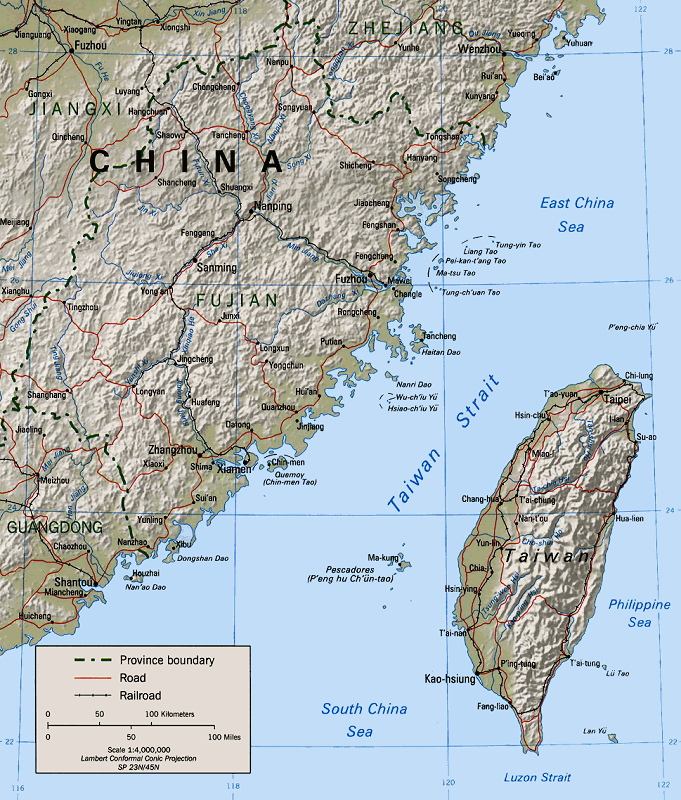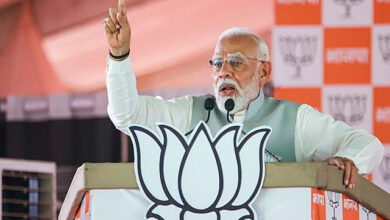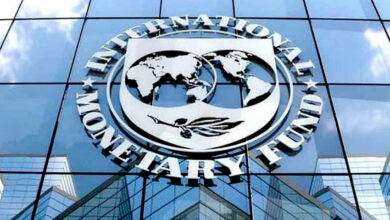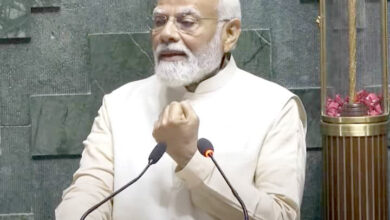China at Line-up for Launching Offensive against Taiwan
By Prof (Dr) Dinesh Kumar Pandey
New Delhi. The deployments and activities being carried out as part of the Chinese exercise known as “The Unified Sharp Sword” are not typical of previous exercises China has carried out in the region. However, the actual executions are alarming. They require Taiwan and its allies to initiate appropriate measures to deal with any potential escalation, like the offensive conducted by Chinese forces.

‘The Unified Sharp Sword’ is the name of a military exercise that China began surrounding Taiwan on April 8, 2023, the day after Taiwan President Tsai Ing-wen returned from a brief visit to the United States. The exercise was scheduled for three days.
The invasion of Ukraine by Russia is serving as a source of inspiration for China. The order of events surrounding the activation of the military is comparable to the activation process used by Russia. War games were played between Russia and Belarus from the 3rd to the 20th of February, 2022. After that, Russia launched what’s being called its largest military exercise since the Cold War. The Russian military finally went on the offensive on February 24, 2022. PLA may adhere to different lines, but their posturing conveys the message.
‘The Joint Sword’ exercise involves practising an encirclement of Taiwan with planes, ships, and personnel in the maritime areas and air space of the Taiwan Strait, off the northern and southern coasts of the island, and to the island’s east. In addition, the exercise takes place off the island’s east coast. In addition, live-fire exercises will be conducted off the coast of the province of Fujian in China. During a meeting between the Taiwanese president of the self-ruled island and the speaker of the House of Representatives of the United States in California, China stated that the exercise was a “stern warning” to the authorities of the self-ruled island.
The Ministry of Defense of Taiwan has stated that as of 8:00 GMT on 9th April, they had spotted 70 Chinese aircraft, including SU-30 fighters and H-6 bombers, as well as 11 ships, in the area surrounding Taiwan.
“The movements of the Chinese communists’ Rocket Force are well understood by the nation’s military thanks to the joint intelligence, surveillance, and reconnaissance system, and the air defence forces continue to be on high alert”, the Ministry said. It stated once again that Taiwan’s armed forces would “not escalate conflicts nor cause disputes” and that they would respond “appropriately” to the drills that China was conducting.
Chinese Deployments
Beijing views Ms Tsai as a separatist and has repeatedly ignored her repeated requests for talks. According to her, the people of Taiwan are the only ones who can decide the country’s fate. As a result, an annoyed China has activated the military elements. As part of the “Exercise”, Taiwan is entirely encircled by Chinese military forces consisting of fighter jets, destroyers, and aircraft carriers. The Ministry of Defense of Taiwan reported that it had spotted 70 Chinese aircraft, including Su-30 fighters and H-6 bombers, as well as 11 Chinese ships, in the area surrounding the island.
The Chinese deployments against Taiwan for the exercise are:
(a) The DF-11 and DF-15 short-range conventional ballistic missiles with 600 and 1800 km, respectively. The Center for Strategic and International Studies (CSIS) says the DF-15 is capable of striking Taiwan, the Korean Peninsula, and northern India from mainland China.
(b) PHL-16′ 370mm Multiple Launch Rocket System (MLRS)’ Rocket artillery with a range of 500km.
(c) J-16 fighter jets, with long and close-range Air to Air missiles.
(d) J-10C fighter jets.
(e) KJ-500 early warning and surveillance aircraft.
(f) Y-8 anti-submarine aircraft.
(g) YJ-12B land-based anti-ship missiles with a range of 460 Km, capable of carrying both nuclear and conventional warheads.
(h) Type 052C destroyer and the Type 054A frigate designed for anti-air combat; and equipped with HQ-16 range surface-air missiles with a range of 50 Km capable of striking aerial targets.
(i) Nine Chinese warships.
Inspired by Russia-Ukraine Conflict
Since 1949, when Taiwan first declared its independence from China, tensions have been mounting between Taiwan and China. China does not recognise the sovereignty of the island state, even though it does not control the island in question. However, Chinese President Xi Jinping has made it clear on multiple occasions that China intends to pursue reunification with Taiwan, offensive measures included.
China is preparing for a possible war with Taiwan by taking the lessons it has learned from the military conflict that has been going on between Russia and Ukraine. Meng Xiangqing, a major general and Professor at the National Defense University, Beijing, wrote in the Guangming Daily that Russia’s nuclear deterrence strategy undoubtedly played a role in preventing the United States-led NATO from intervening in the conflict and daring to go directly to war. However, if China fully activates during the conflict, Beijing must prepare for similar challenges.
China is conducting an in-depth analysis of the multifaceted aspects of the conflict between Russia and Ukraine as the country prepares for what could be a war with Taiwan. It is possible that the military’s resources, such as aircraft, warships, artillery, drones, and electronic warfare, will be exploited shortly. First, however, China must investigate the aftereffects of the economic sanctions imposed on Russia and the negative impact these sanctions have had on the Russian economy and the financial order of the world.
War or Confrontation
It is possible that a war between China and Taiwan would not break out due to the global mutual economic interdependence as well as between Taiwan and China.
However, Chinese expansionist ambitions may result in a confrontation. Because of the supply chain for semiconductor chips, it’s possible that other countries, including the United States, won’t approve of it. Around 20 percent of the total global semiconductor industry was contributed by Taiwan’s semiconductor sector, which accounted for 115 billion US dollars. Tensions in the strait will threaten global trade.
The Taiwan strait is the primary shipping corridor for goods travelling between China, Japan, the United States of America, and Europe. In addition, it acts as a trade route for the technological powerhouse that is South Korea, transporting manufactured goods from factories in Asia to consumers in many different parts of the world. The coast on the other side of the Strait is home to several of the largest and busiest ports, including Shanghai, Ningbo, Shenzhen, and Guangzhou. Operations at these ports will be severely eclipsed.
Conclusion
The ‘peace of the world’ is currently in jeopardy. The conflict between Russia and Ukraine has lasted for more than a year and has caused three major crises in finance, energy, and food supplies. In addition, underdeveloped countries are experiencing a great deal of hardship.
Adding one more front to the conflict will worsen the current financial situation.The appropriate strategy for removing the cloud of uncertainty surrounding the opening of a new war front is to negotiate in a transparent and objective-based manner using diplomatic solutions. In order to gain control of these crises, immediate intervention from all members of the Group of Seven (G-7), the United Nations, and any other relevant alliances is required.





